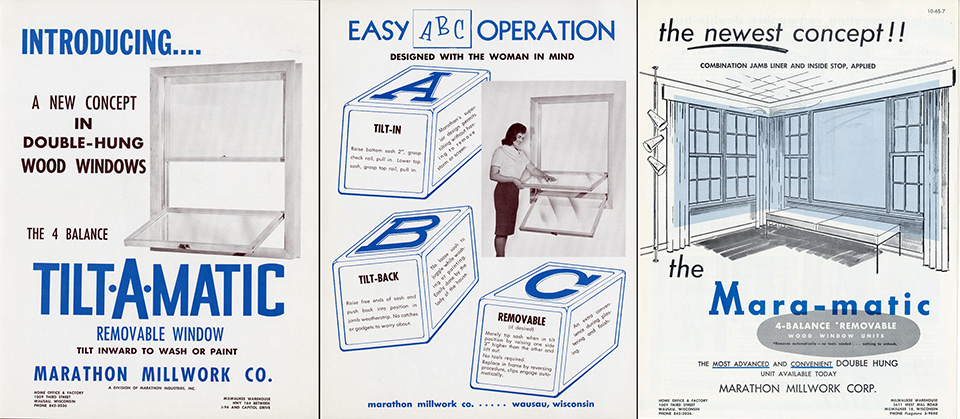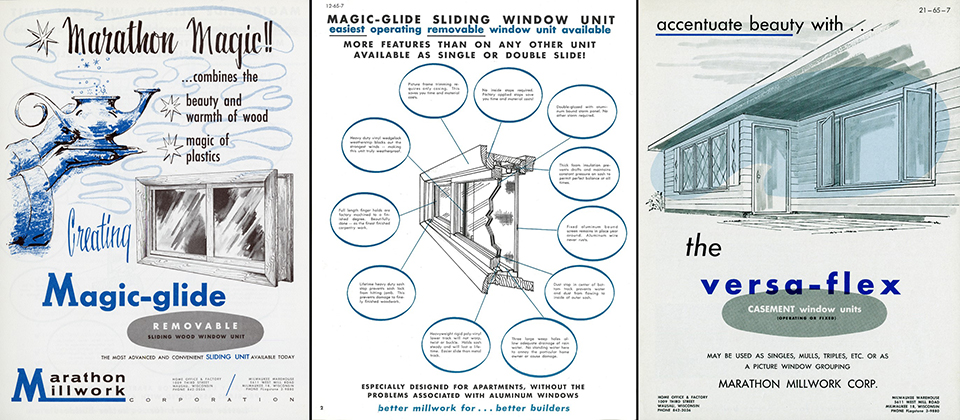Marathon Mill Work
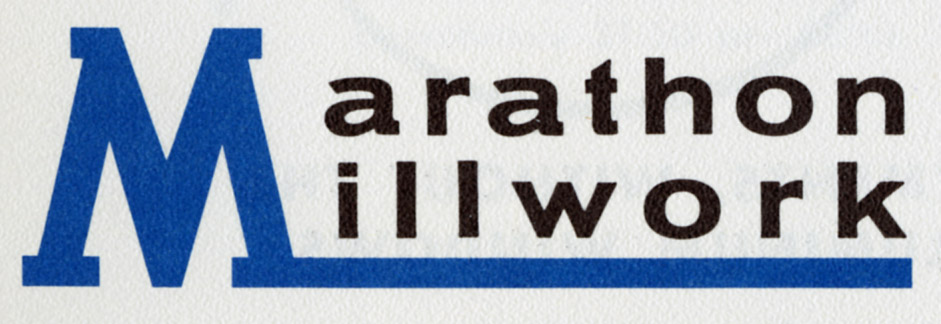
Marathon Mill Work
New Owners and Modernization
In 1945, Joseph Usow purchased the J.M. Kuebler Company from John Kuebler's son, Ben Kuebler.
Joseph Usow had owned a clothing business in Milwaukee, and came to Wausau in 1934 to arrange for the purchase of some garments. He saw an opportunity in a closed rubber factory, which had closed a few months prior due to crippling labor relations and had been seized by the City of Wausau for unpaid taxes. Usow purchased the rubber company and reestablished it as Marathon Rubber, and would end up moving to Wausau to oversee the venture.
During World War II, Usow recognized that construction projects had been put on, and understood that window and door manufacturers would benefit from the resumption of peacetime building. Ben Kuebler was willing to sell his father's company, but it would need some modernization;
When Usow purchased the firm there was a series of buildings, all quite run down, and horses were used to move lumber about the location. Plant Buildings had dirt floors and the few machines on hand were run by belts and pulleys from a central line shaft. Floors were laid and remodeling was done throughout the years, and the two main buildings were joined through the addition of a mid-section structure. Horses were last used in 1950.1
This process was started by Joseph Usow, but was continued after his death in 1947, by his sister Bernice Cohan and her son Herbert Cohan.2 Like Joseph, Bernice had been a Jewish immigrant who fled to the United States from Russia after the 1918 Russian Revolution. Although she initially appeared to be following her doctor father's footsteps and had attended medical school in Siberia, in the United States it became clear that she shared her brothers aptitude for business. And it was largely under Bernice's leadership that the modern Marathon Millwork was created.
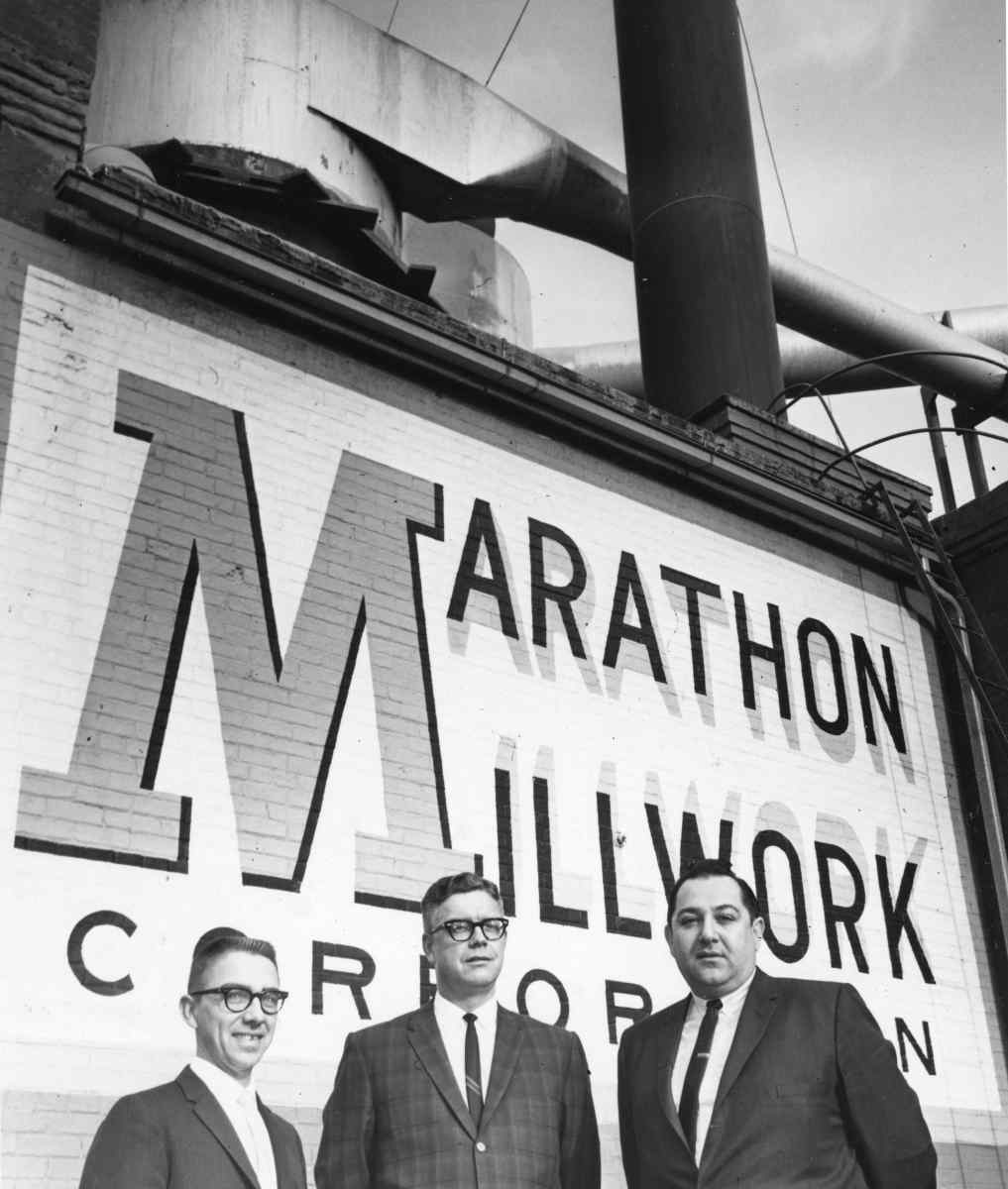
The modernization program under the Usow/Cohans took the company from 12 employees in 1946, to 135 in 1949. Some buildings were replaced while others were repaired and modern equipment installed within, and soon a catalog of standardized the products were being produced. With help from management inherited from the Kuebler days (in particular Anton Torzewski and Paul Koebke were cited as being "instrumental in helping the new management when it took over") as well as a new generation of professionals (such as Sidney Winnig), the J.M. Kuebler emerged as a leading modern wood window manufacturer.4
"The Silent Giant"
By the 1960s the company had become the largest supplier of windows and doors for Wisconsin builders and was dubbed by one commentator during the Milwaukee Parade of Homes, the "Silent Giant of the Building Industry."x
Further changes were made to reflect its new situation during the 1960s--changes no longer intended to modernize, but to let the company continue to grow. In August 1960, the company's name was changed to “the Marathon Millwork Corporation” (from the J.M. Kuebler Company), because “the company grown to such stature in its field that the new name would enhance the corporate image, be better suited for advertising and more adequately identify the company.”5
In 1966 the company was merged with the other Usow/Cohan company, “Marathon Rubber Products” under the wider umbrella of Marathon Industries, Inc.6 This was accompanied by an expansion of a warehouse and sales branch in Milwaukee for Marathon Industries.7
The 1960s also saw considerable changes to the Marathon Rubber business, which shifted from primarily government contracts towards recreational clothing. By the mid 1960s, Marathon Rubber were being used to keep dry by everyone from school patrol guards to the Green Bay Packers and New York City policemen.8
But while the rubber products side of Marathon Industries was thriving, by the end of the 1960s, a decline in building caused problems for the millwork side of the business. The loss of longtime figures in the building, such as former vice-president and manager Sid Winnig in 1969, complicated the situation. By 1971, the Cohans decided to liquidate the millwork and focus on the more profitable rubber products.
Much of Marathon Millwork's manufacturing assets were sold to Weathershield Co. of Medford in 1971, and the remaining retail assets were dissolved by early 1972.9
The old Kuelber Building remained vacant throughout the 1970s, but was repurposed by Marathon Industries to be the home for a new subsidiary, Marathon Plastics Corporation. The new company moved into the old Millwork facilities in 1984 to produce a "low-priced, light line of rain-wear for work and sports." In the 1990s, the company relocated to Mosinee.After Marathon Plastics left the 3rd Street property, it again became a vacant warehouse in the late 1990s.
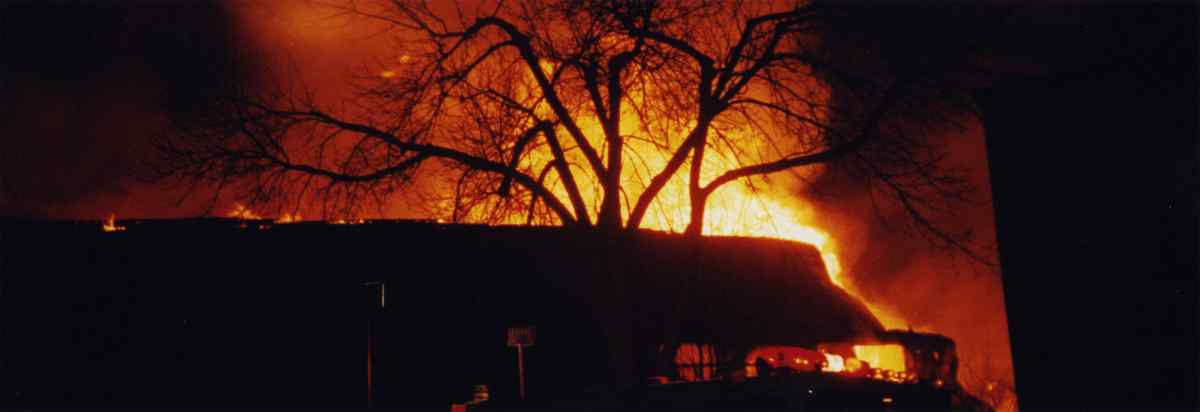
In the evening of February 9, 2002, a fire broke out on the vacant warehouse on 3rd Street. The blaze that engulfed the building, continued to burn into the night as hundreds of spectators gathered to watch the firefighters work to contain the fire. The blaze was so large that skiiers on Rib Mountain stopped to watch the distant inferno.
Many of the spectators undoubtedly wondered what exactly what the building had been used for in the last century. The newspaper coverage following the blaze noted that it had once been home to window and door factory owned by Werheim and later Kuelber, but it also mentioned that early in the fire, they had managed to remove boats and cars stored there. Further reporting on the cleanup later in the week identified the facilities as being home to Marathon Millwork, which it described as a "garment manufacturer." Another article about the fire during the week noted that the owners were prooving elusive to contact, and mentioned that at one point the warehouse had been used by the Stone Lumber Materials company.
Of course many did know the place's history, and remembered the windows and doors produced there. But in some ways the confusion over the company's legacy is fitting, given their reputation as the silent giant of their industry.
Sources
1. "Spotlight on Industry: Marathon Millwork Employes' Payroll Has Grown Rapidly" WDH (1 Feb, 1964), 9.
2. Ibid.
3. "Mrs. Bernice Cohan" WDH (26 May 1976) 12.
x. "Spotlight on Industry: Marathon Millwork Employes' Payroll Has Grown Rapidly" WDH (1 Feb, 1964), 9.
4. "Spotlight on Industry: Marathon Millwork Employes' Payroll Has Grown Rapidly" WDH (1 Feb, 1964), 9.
5. “Kuebler Co. Changes Corporate Name” WDH (19 August 1960) 11. (quoting Bernice Cohan)
6. “Marathon Millwork, Marathon Rubber Announce Merger” WDH (22 January 1966), 3.
7. “Marathon Millwork Expands Milwaukee Operations” WDH (29 January 1966), 5.
8. Mike Moen. "Spotlight on Industry: Packers, New York's Police Wear Marathon Rubber Capes. WDH (14 September 1963) 9.
9. “Marathon Millwork sold” Wausau Daily Herald (4 April 1971), 3

